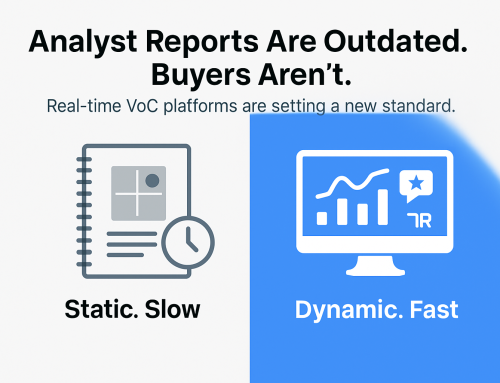It’s a reign that has lasted more than 30 years – and shows no sign of abating. Although there are plenty who are uncomfortable with the sheer power wielded by selected industry analysts, it is certainly not the case that they are being supplanted by enterprise peer review sites – swept away by the hundreds of thousands of freely-available reviews.
The growing volume of reviews may even be strengthening the power of the analyst instead of disrupting it. In a world where everyone is sharing their opinions, it’s getting harder for enterprise buyers to separate fact from fiction and distinguish between a solitary bad experience and a truly awful service.
At first, the proliferation of enterprise peer review sites looked like a revolution for buyers – and many expected/hoped it would reduce the influence of the mighty analyst. What a bounty! A cornucopia of free to access reviews, giving the inside track from people buying and using technology. Who needs to pay analysts for advice anymore, anyway?
Indeed.
But as review inventories increase, it has also – perhaps counterintuitively – become increasingly more frustrating to rely on reviews to provide an authoritative source of the truth. Buyers seeking advice are overwhelmed by numbers. There are so many reviews out there – even if you’re guided by the “most helpful” – finding the expert advice you need is hit and miss. Although the consensus is helpful – the general trend of service A getting overall higher ratings than a competing service from a rival vendor – then the big picture is all you get.
Ironically, these overall scores are comparable to big-ticket analyst reports – like a Gartner Magic Quadrant or a Forrester Wave. These – and many others – are diligent in picking out the generic winners and losers in specific markets – but, as the analysts are keen to stress (especially to disenchanted vendors whose dot isn’t in the vaunted top right position): for a specific organization’s requirements, they may be better off buying from a challenger, a visionary or even a niche player.
Enterprises taking the risk of making buying decisions on published analyst research alone are not making the most informed choices. Buying enterprise software, services, and hardware isn’t like choosing your next smartphone. You may have already made up your mind to go for an iPhone or a Samsung – and will read consumer tests and reviews to help validate your decision – often both before and after you’ve made it. If it turns out that you made a less than optimal choice, it’s not the end of the world – trade it in or get a replacement model in two years anyway. On the other hand, enterprise technology decisions are more fundamental, and you’re either stuck with it or will need to spend a lot of money to reverse the decision.
This is where analyst inquiries come in. As detailed in Enterprise Peer Reviews: A Playbook for Vendors, the analyst is still dominant when it comes to narrowing down the field of vendors from 3:1. How a buyer gets down to that, shortlist may today be influenced by enterprise peer review sites, as well as analyst reports, tweets, vendors’ own marketing efforts, etc. Nor do we see this situation changing – even if the peer review sites introduce AI/ML to help in the decision-making process. More on that in our next blog.
This is why we think the analyst’s role has a bright future in helping buyers select the technologies and vendors that are the best fit for their needs, both immediately and looking into the future. Vendors that win the peer review site ratings battle are, of course, going to create more attention – just like those who secure a coveted leader position in an analyst evaluation. But by itself, that’s not enough to tip the balance.






